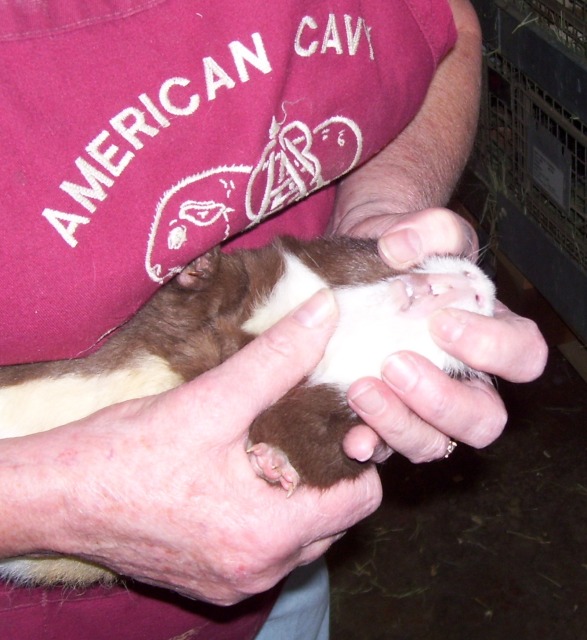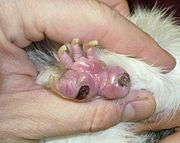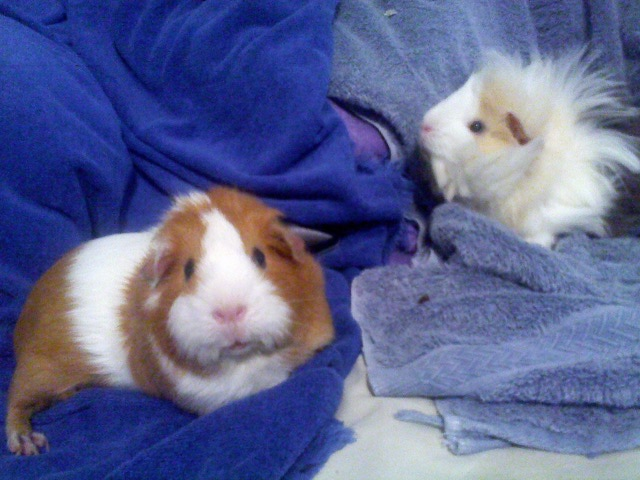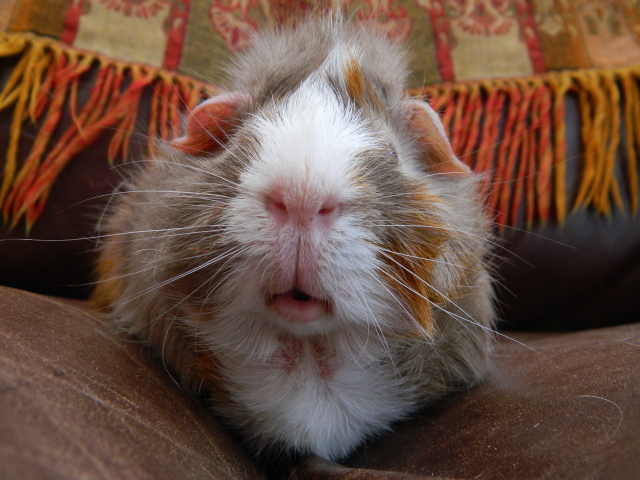QuestionHi,
Once again, thank you for your response to my question 'Unexpected deaths and fur problems'. Though I said my guinea pigs are happier, I do have one troubled pig.
I usually don't count her with my other healthy pigs, as she has always had problems. So I would like to address this individually.
Her name is Ferret. She is highly crossed-bred, smaller than my other guinea pigs, and doesn't have a definite gender. She's about 4 years old. I'm not sure if that would have anything to do with her problem, but it might be important.
She recently has been having what appears to be 'seizures'. She's so far had two (that I know of) episodes, where she would become extremely limp. After 5-10 minutes, she would lay on her side and start kicking her legs violently and rolling about. Then she would lay there for a bit, and slowly get up and begin behaving as normal. I would liken the experience to the way a guinea pig behaves before death, except that she doesn't die when it is over. It's a very unusual and distressing experience, which has never happened to any other guinea pig I have owned. She eats and drinks normally, and behaves like any other guinea pig. But without warning, she will just become limp and weak.
I have reduced their grass and vegetable scraps as was recommended in your last response. They still eat hay, pellets and have plenty of water.
It doesn't happen very often, and she is otherwise a healthy and happy guinea pig. I kept her as a baby because she was 'different', and now I feel it's more than just the way she looks.
Thank you in advance for any response.
AnswerI'm not sure what you mean when you say she doesn't have a "definite gender?" Do you perhaps mean breed?
Some pigs, specifically American Satins, have a disorder known as osteodystrophy that is unique to the Satin breed. Because these are essentially genetical mutation of sorts that popped up spontaneously in the 1980's her in the US, they have unique issues that other breeds do not have.
A satin coat is a thing of beauty. The hair shafts are hollow, allowing light to pass through it and gives an incredible sheen to their coats. It's most evident on the white hairs as they almost look iridescent and like a pearl.
Of course I don't know if this is the case with your pig, I'm just tossing out a possibility. One of the other issues that is a real problem in satins is calcium deficiency. It can cause some of the symptoms you describe. Calcium supplements are important to these animals.
In the animal world there are a number of breeds that should never be crossed into themselves. The Chinese Crested dogs are a good example. If you cross the hairless to hairless you get these poor creatures with horrible handicaps like the lack of teeth, a tongue that can't stay in the mouth, twisted bones, etc.
In horses we should not cross a Palomino to a Palomino because the result is often something called a "lethal white." The baby has no rectum, the inside are all messed up, they are often unable to even stand, and they don't live more than a couple of days.
In Satin American cavies they will pass on these genetic issues and cause serious problems with development, etc. We cross a Satin to a normal coated animal, thus strengthening the genetic structure. Your pig may have been the result of poor breeding, leaving her with life long issues.
Another breeding problem results from breeding Roan to Roan or Dalmatian to Dalmatian. They have sometimes a white baby that is similar to the lethal white in horses, although genetically it's not quite the same. It is a genetic incompatibility, but some of these babies survive even with their issues.
If you can get some Vit C crystals and add a tiny bit to her water bottle it may help stop this seizure like activity as well. I buy the crystals at Trader Joe's. You only need 1/4 tsp per gallon and it doesn't taint the taste or smell of the water like the liquid vitamin supplements do.
It's worth a try. You may be right about her being the result of irresponsible breeding. If that's the case there really isn't much you can do but just treat her symptoms as they come.
I hope this offers some help. It's a complicated problem. And unfortunately may not be something you can change.

 Fleece bedding
QuestionQUESTION: I recently started using fleece beddi
Fleece bedding
QuestionQUESTION: I recently started using fleece beddi
 Teeth
QuestionQUESTION: One of my guinea pigs is not able to
Teeth
QuestionQUESTION: One of my guinea pigs is not able to
 guinea pigs foot
QuestionMy daughter has a guinea pig that is having a p
guinea pigs foot
QuestionMy daughter has a guinea pig that is having a p
 Guinea pig Screaming
QuestionGinger and Wynter
QUESTION: I have
Guinea pig Screaming
QuestionGinger and Wynter
QUESTION: I have
 Guinea Pig Skin
Question
This is what it looks
Rory my Abyssini
Guinea Pig Skin
Question
This is what it looks
Rory my Abyssini